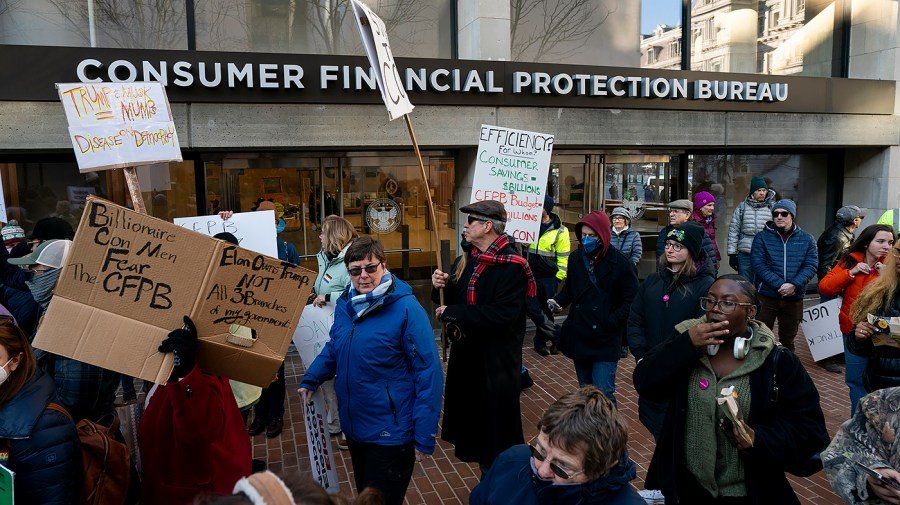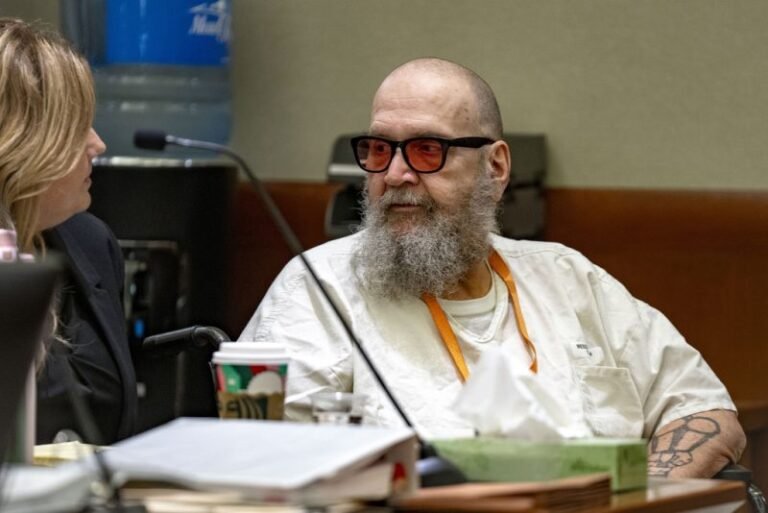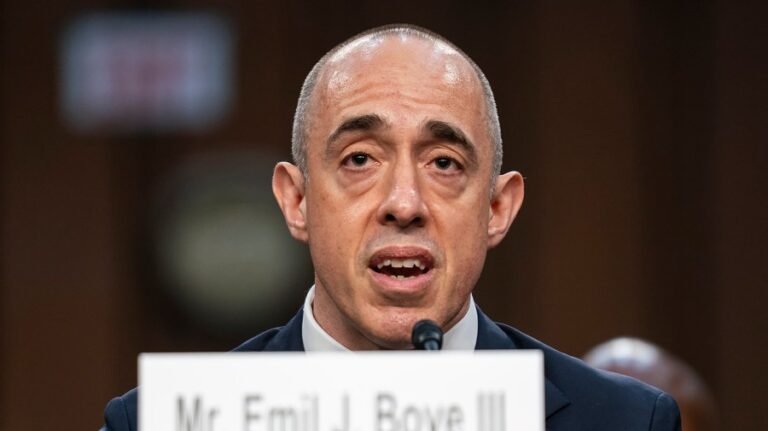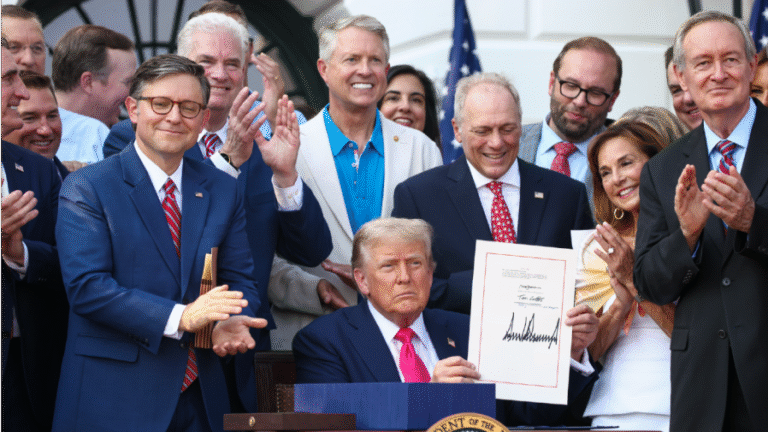
Federal agencies can resume implementing President Trump’s mass layoff directive following Tuesday’s Supreme Court ruling, greenlighting agencies to take their first steps in booting thousands of federal workers.
The apparent 8-1 emergency decision lifts the widest block on Trump’s plans for massive reductions in force (RIF). But a patchwork of injunctions that have yet to reach the justices remain in place, creating a jumbled situation that keeps RIFs at specific agencies on ice.
While many legal battles remain ongoing and more are sure to come, the Tuesday ruling allows the Trump administration to kick off layoffs at 17 agencies that have all been directed to conduct widespread cuts.
Here’s what to know.
Most agencies can resume layoffs
The Trump administration was already on the cusp of laying off thousands of federal workers when the courts intervened, blocking the plan amid litigation.
But the Supreme Court’s decision now paves the way for the executive branch to resume implementing Trump’s Feb. 11 executive order, which directs agencies to undertake RIFs.
The justices lifted a district judge’s May injunction that prevented 22 agencies from carrying out the directive. That ruling meant the agencies couldn’t conduct layoffs or continue planning for them.
Three of those entities — the Department of Government Efficiency, the Office of Management and Budget (OMB) and the Office of Personnel Management (OPM) — aid the others in implementing the initiative. The judge described their role as Trump’s “centralized decisionmakers.”
Among the remaining 19, judges in separate lawsuits have blocked RIFs at both the Department of Health and Human Services and AmeriCorps. Those injunctions remain in effect.
That leaves 17 agencies newly freed to proceed in the wake of Tuesday’s ruling.
The list includes the Agriculture, Commerce, Energy, Housing and Urban Development, Interior, Labor, State, Treasury, Transportation, and Veterans Affairs departments.
The Environmental Protection Agency, General Services Administration, National Labor Relations Board, National Science Foundation, Peace Corps, Small Business Administration and Social Security Agency are also part of the group of 17 agencies that can now begin layoffs.
The injunction had only left four of the nation’s 15 executive departments untouched: Defense, Education, Homeland Security and Justice. Separate litigation has halted the Education layoffs, however.
What’s next in implementing the RIF directive
Trump’s February executive order had directed agencies to pull together their RIF lists and agency redesign plans by April 14, so departments that complied were awaiting approval from OMB when the court enjoined the process.
Now, agencies are largely prepared to actually carry out the RIFs they were planning on and can likely quickly pivot to do so.
A joint memo from OPM and OMB directed agencies to seek a waiver to shorten the notification window for employees, so employees could be given as little as 30 days notice that they will lose their jobs, rather than the traditional 60 days.
The justices went out of their way to make clear they haven’t yet resolved whether any specific agency’s reorganization plan is legal.
The Trump administration also still has numerous aspects it must comply with in carrying out the RIFs, including details surrounding how they select those they are laying off and in some cases notifying Congress and unions.
Those agency-by-agency plans could ultimately reach the justices.
While only Justice Ketanji Brown Jackson publicly dissented Tuesday, one of her fellow Democratic-appointed justices expressed an openness to joining her down the road.
Justice Sonia Sotomayor in a one-paragraph solo opinion said she agreed with Jackson that Trump cannot “restructure federal agencies in a manner inconsistent with congressional mandates.”
“The plans themselves are not before this Court, at this stage, and we thus have no occasion to consider whether they can and will be carried out consistent with the constraints of law,” Sotomayor cautioned.
Some layoff efforts remain blocked
Some layoffs remain on hold as a result of other lawsuits.
That includes injunctions still on the books for two of the agencies implicated in Tuesday’s Supreme Court ruling.
Democratic-led states persuaded U.S. District Judge Melissa DuBose to block a RIF impacting nearly 10,000 Department of Health and Human Services workers. DuBose is an appointee of former President Biden.
Secretary Robert F. Kennedy Jr. had announced the layoffs March 27 as part of a massive restructuring effort.
At AmeriCorps, U.S. District Judge Matthew Maddox ordered the administration to reinstate employees it eliminated or put on leave in an April RIF. Maddox, another Biden appointee, also blocked officials from conducting any new RIF that affects unionized employees.
Both blocks remain in full force. A handful of judges have also halted agency-specific RIFs rooted in other policy justifications, like Trump’s campaign promise to eliminate the Education Department.
Democratic-led states, school districts and unions convinced U.S. District Judge Myong Joun, an appointee of former President Biden who serves in Boston, to indefinitely block a March RIF covering 1,400 workers, roughly half the department’s staff.
The administration filed an emergency bid at the Supreme Court to lift the block, and the justices could rule at any time.
And beyond RIFs, courts have also still blocked the firing of probationary employees – those still within their first year or two of service – if they used the OPM template to carry out the wide-ranging firings.
Other cases remain in the lower courts.
In response to another union lawsuit, a federal appeals court blocked a RIF at the Consumer Financial Protection Bureau that would impact 90 percent of employees. That block remains in effect until the appeals panel resolves the case.
Federal judges have also reversed mass terminations at the U.S. African Development Foundation and Inter-American Foundation, which help promote democracy and development efforts in Africa and Latin America.
The judges found Trump unlawfully installed Pete Marocco to lead the groups, so all of his actions are void. Morocco’s appointments came after Trump signed an executive order on Feb. 19 calling for the two agencies to be eliminated to the maximum extent possible.






